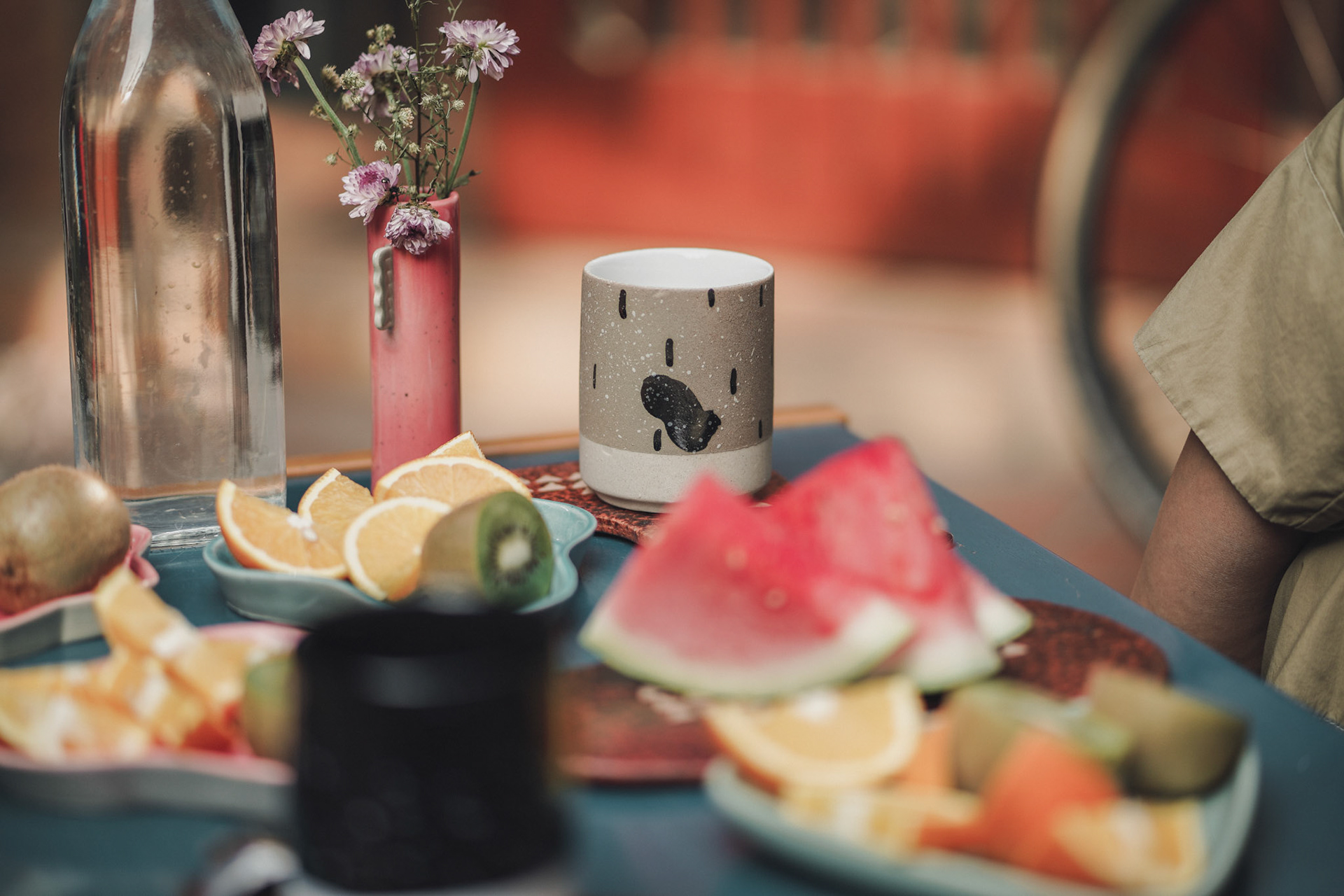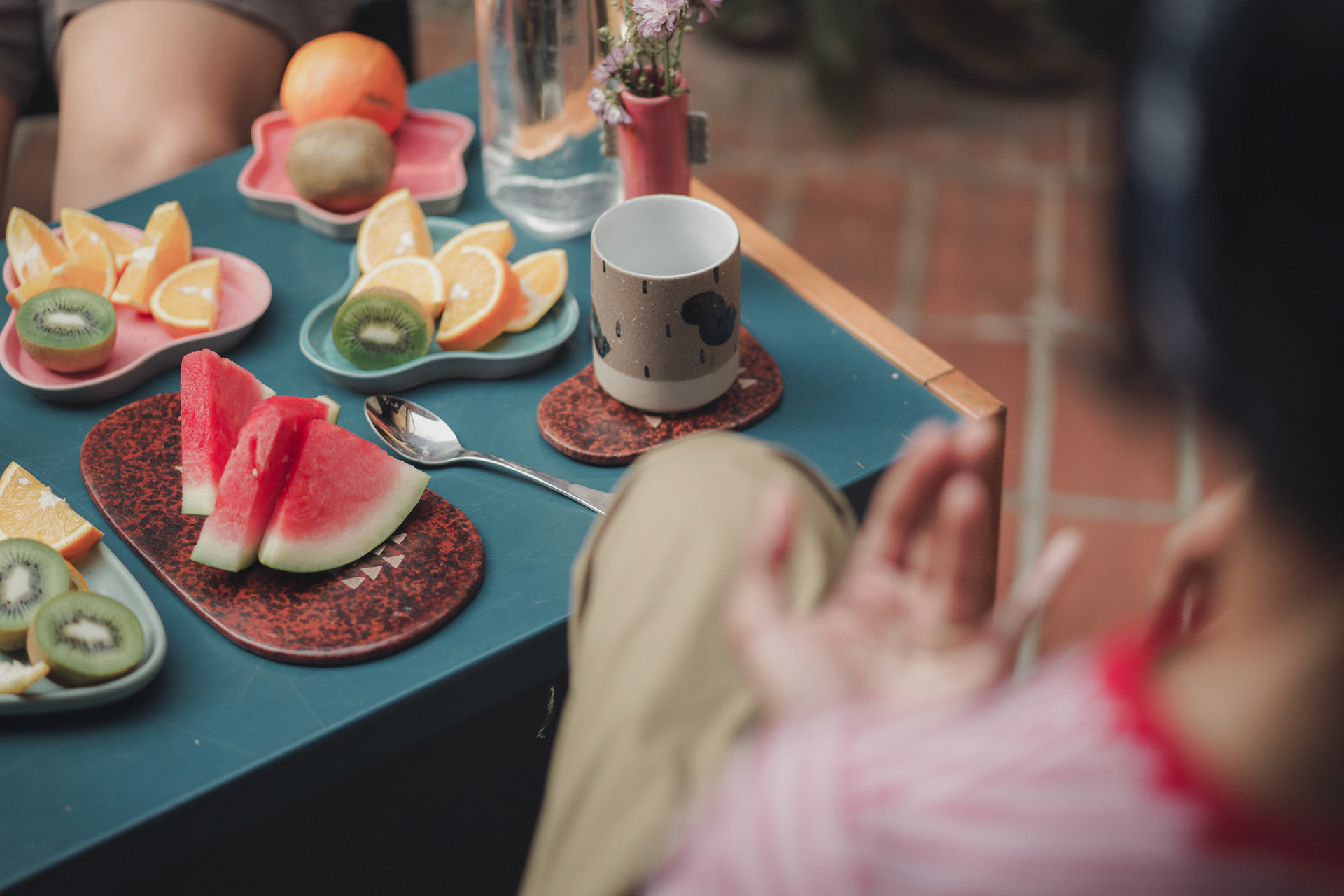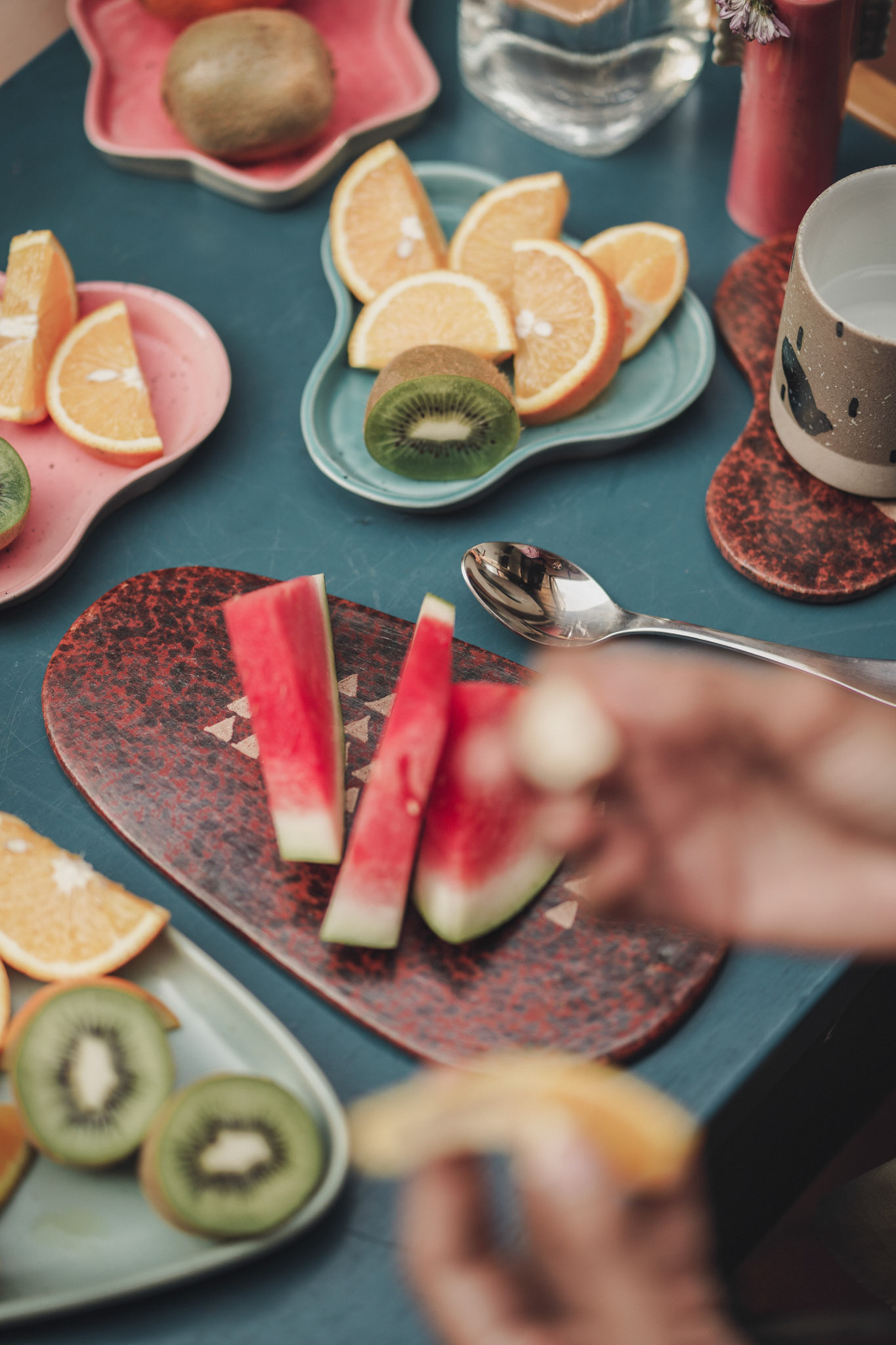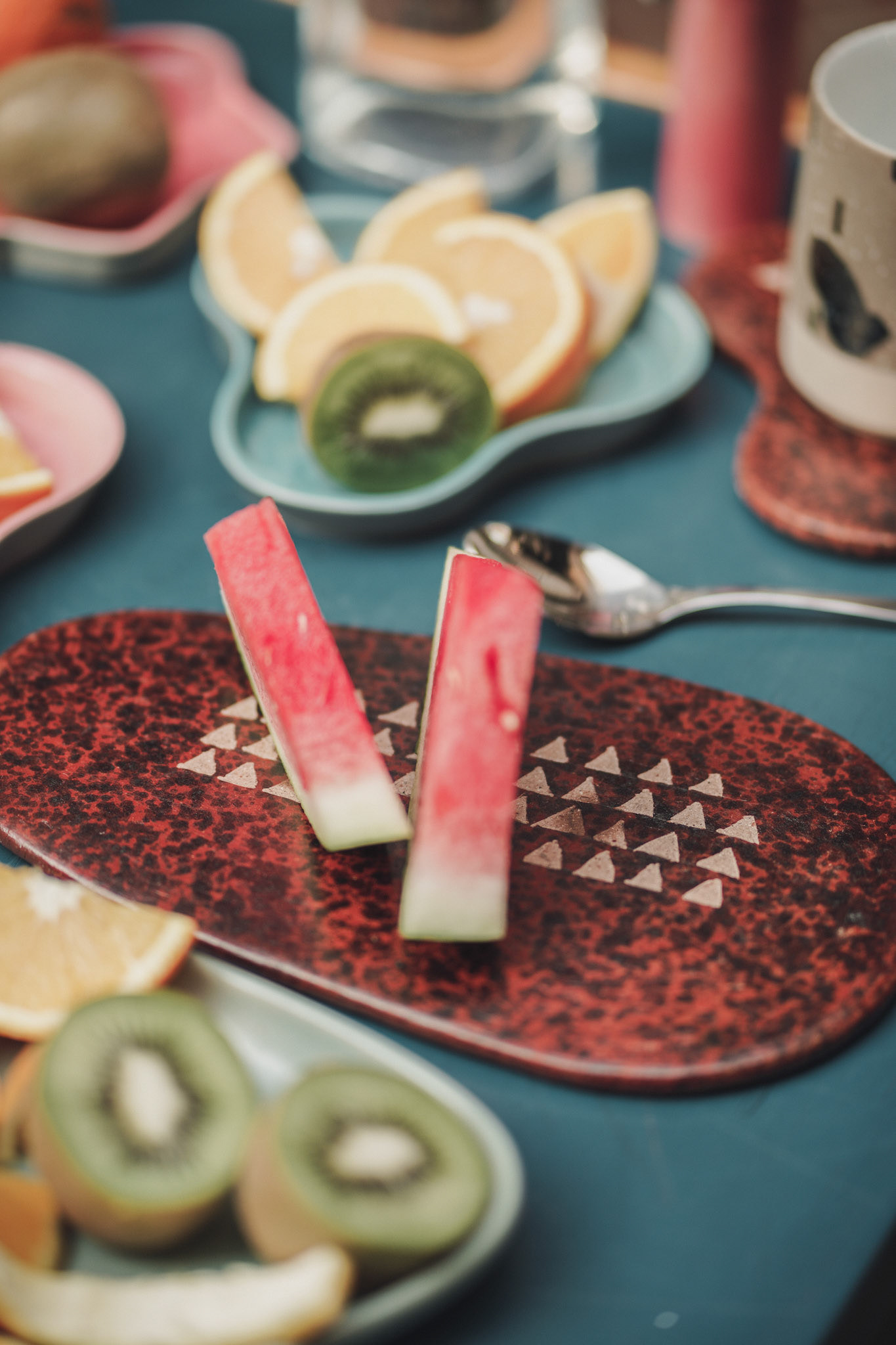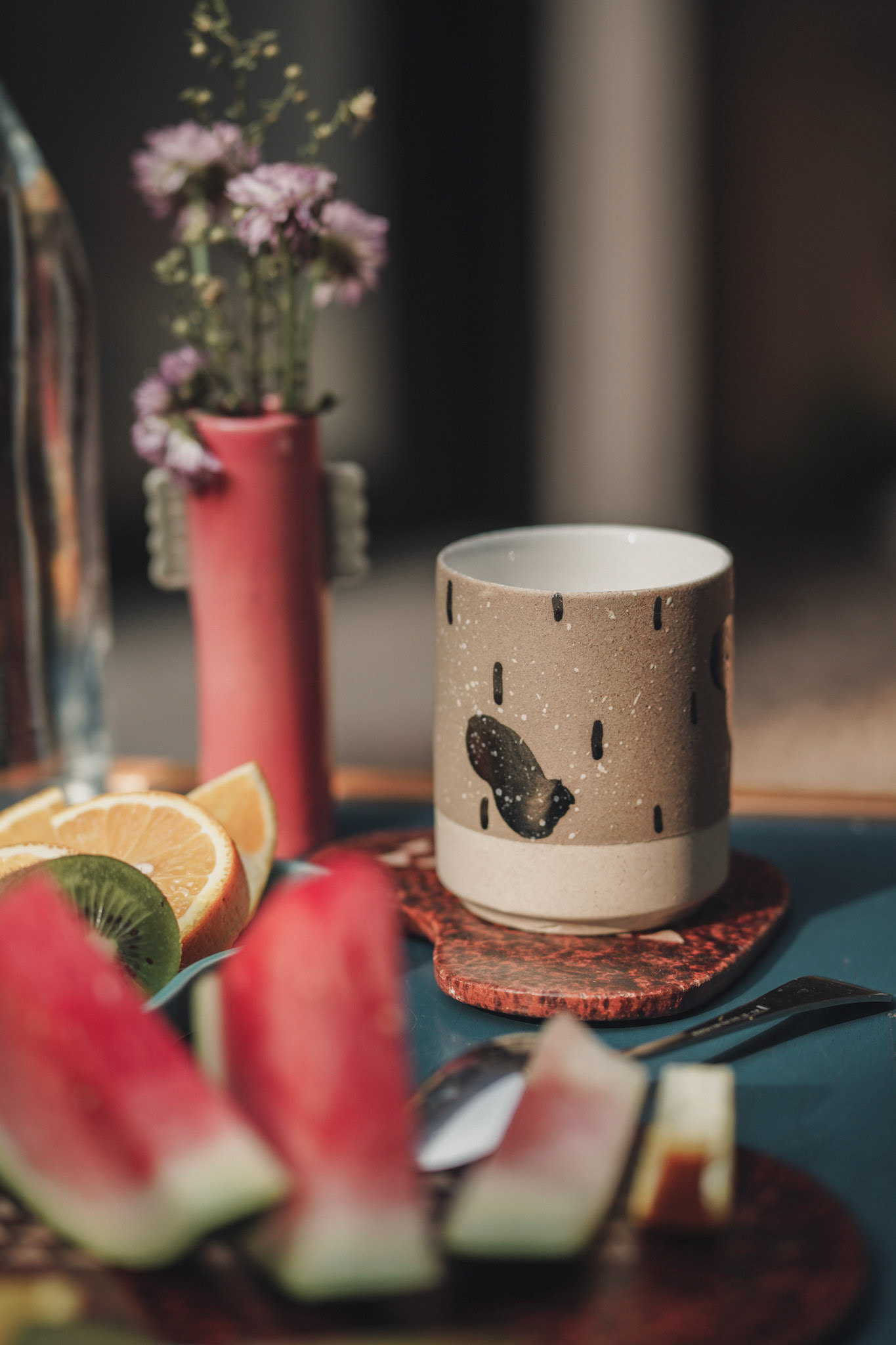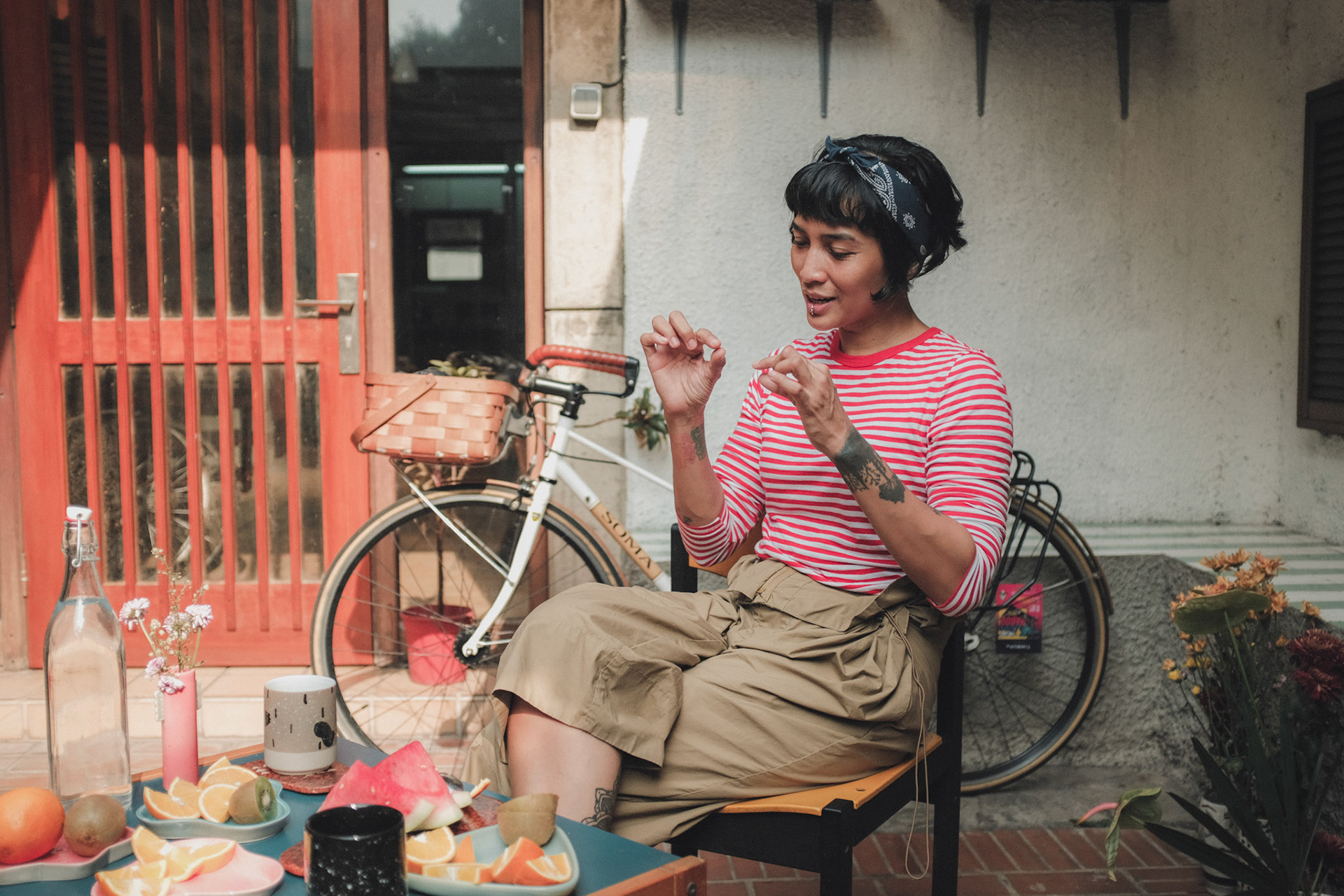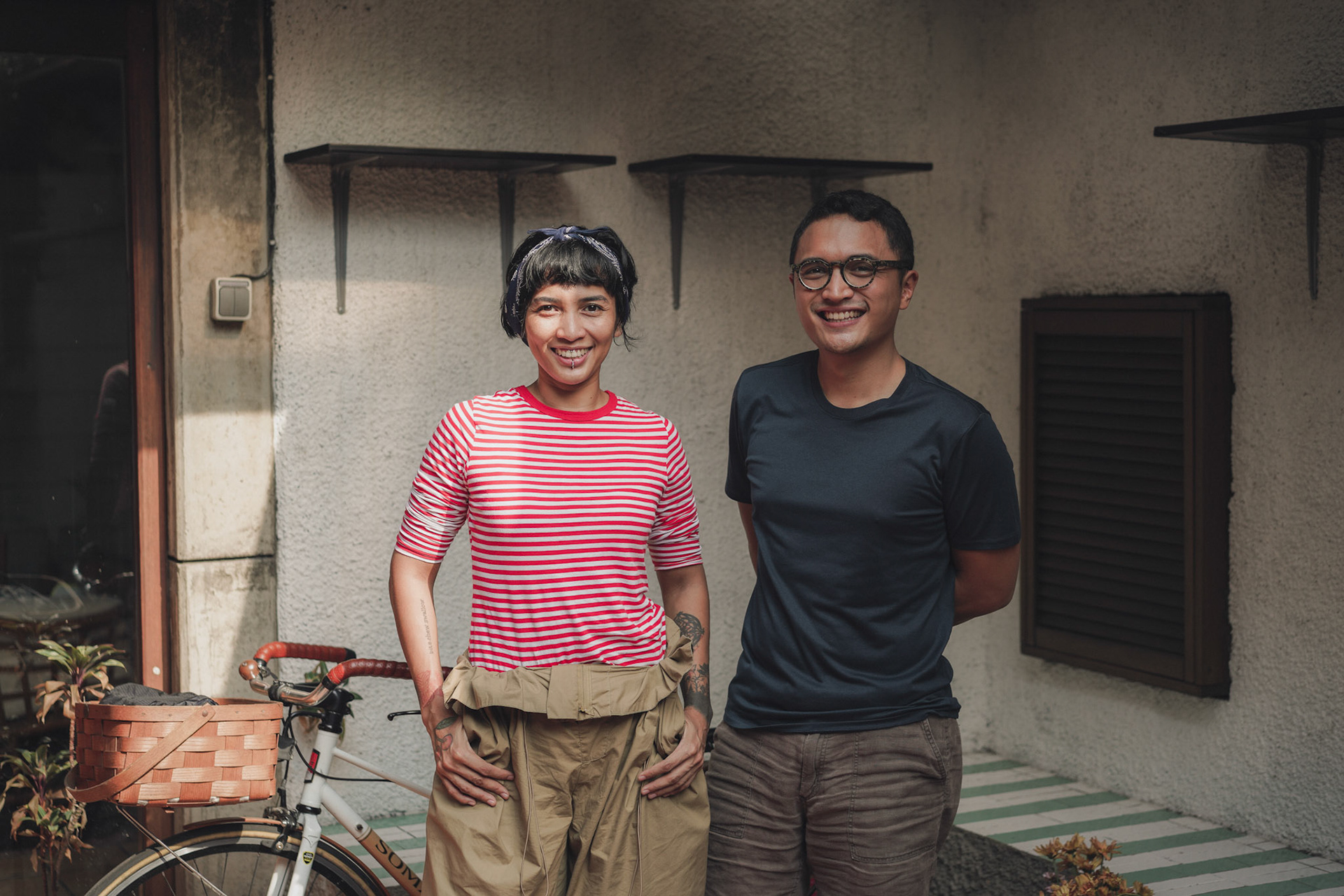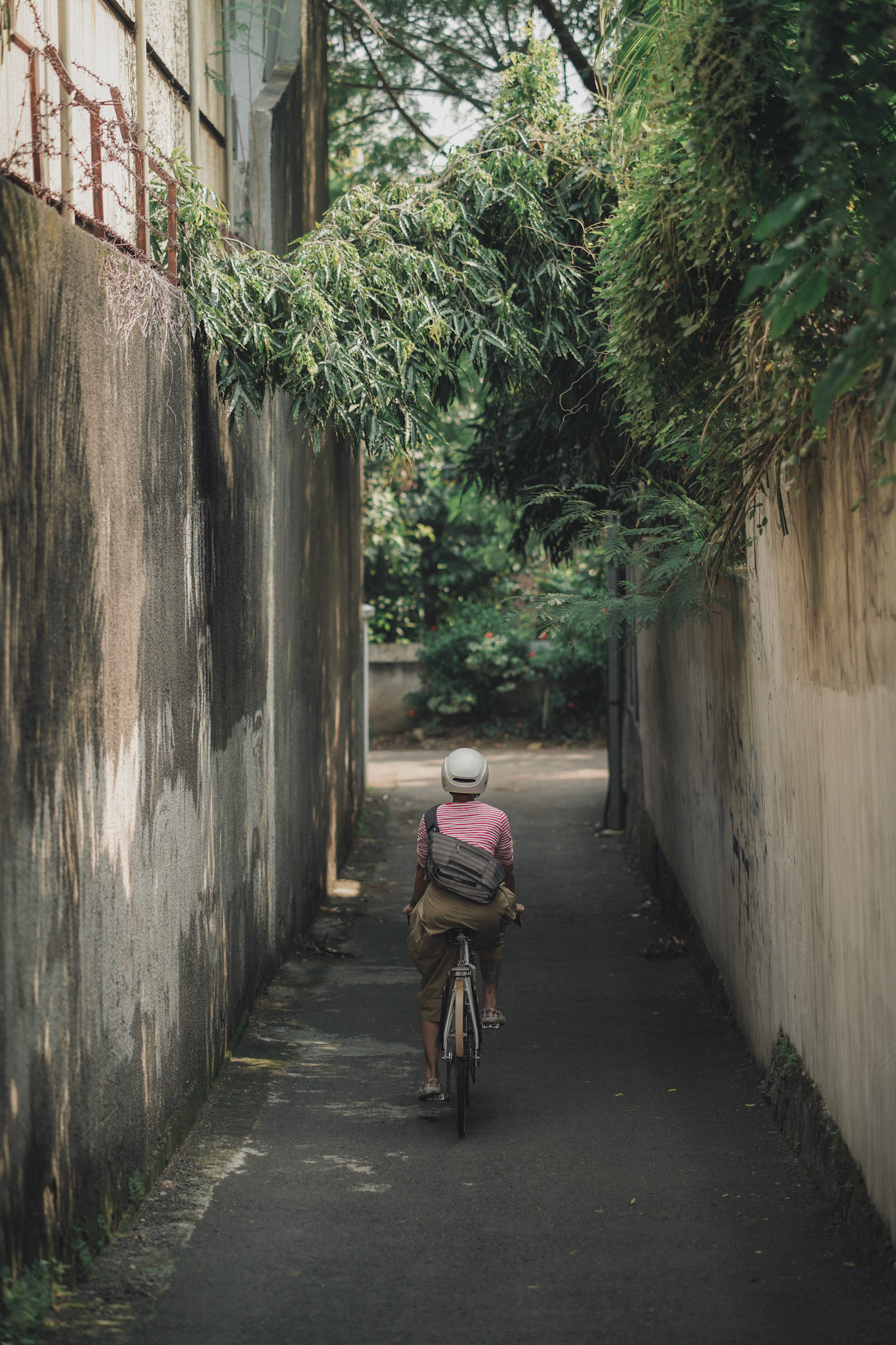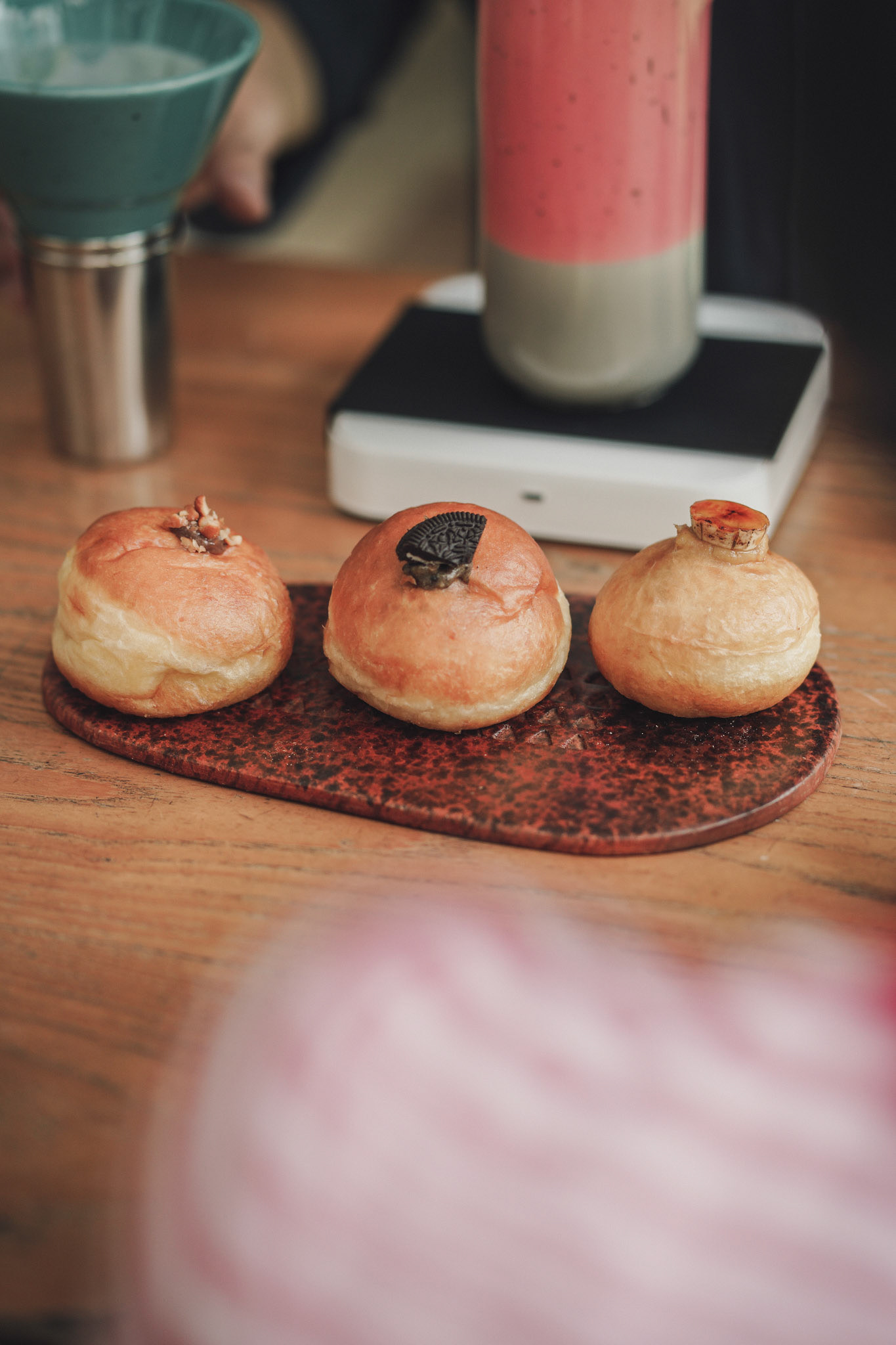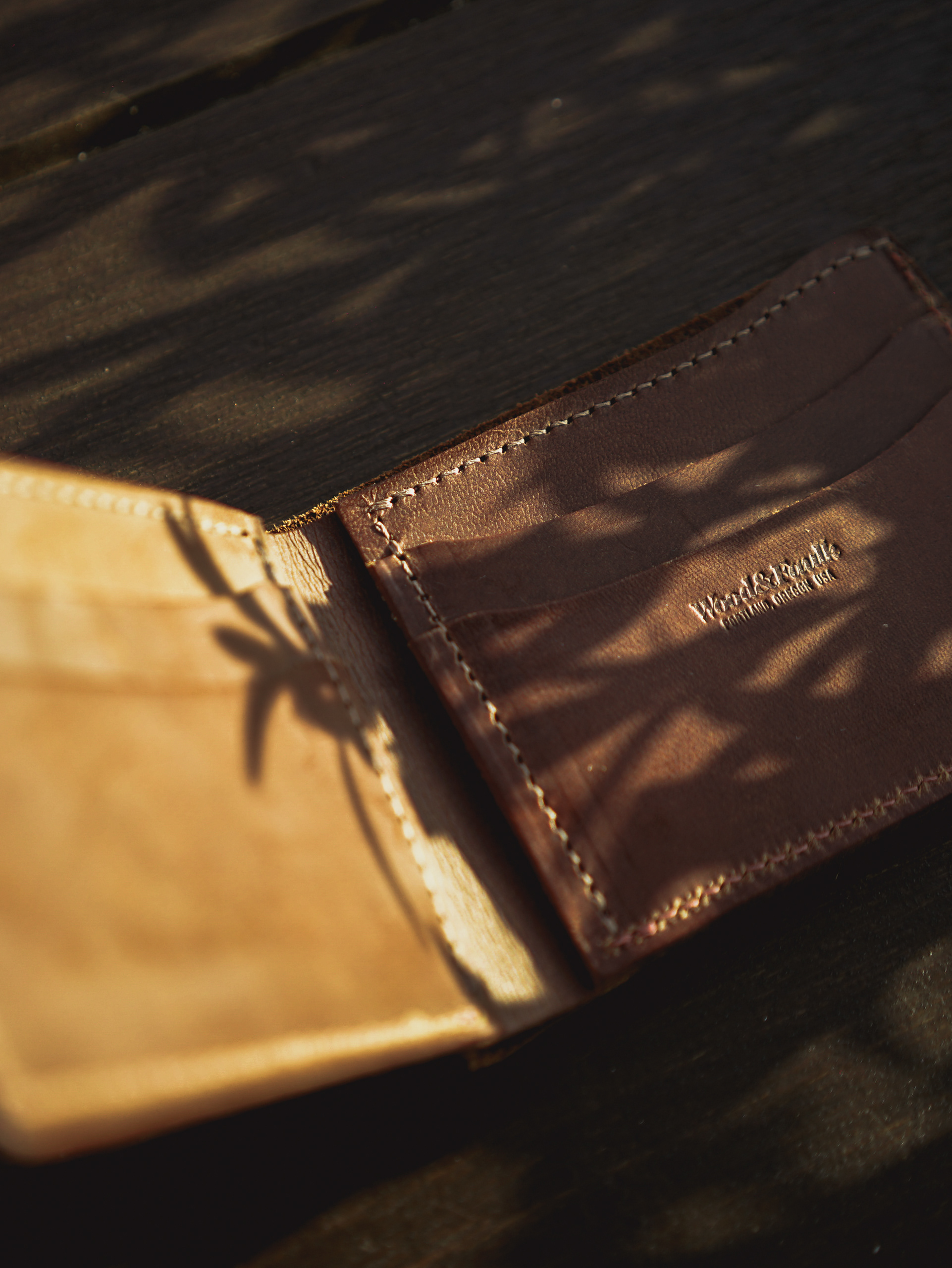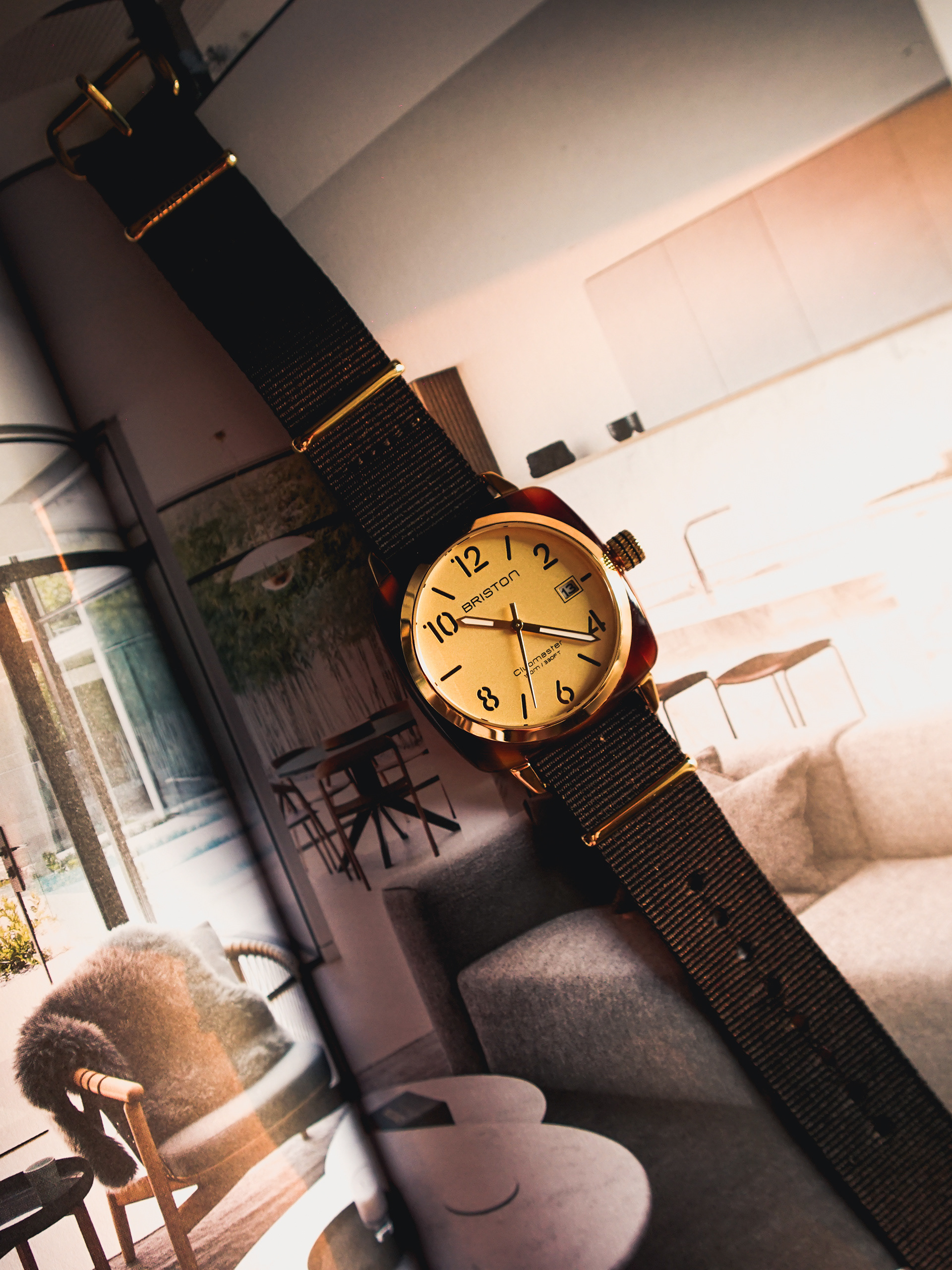What's Often Missed when We Eat : a conversation between food storyteller Ade Putri Paramadita, and Kandura Studio’s Fauzy Kamal
"I had Katsu for breakfast," answered Ade when asked about her breakfast that morning before her interview began with Fauzy, one of Kandura Studio’s founders.
Ade Putri Paramadita — a culinary story-teller who is active in the ACMI (Aku Cinta Makanan Indonesia / I love Indonesian food) movement and one of Beergembira’s co founders, likes to start her day with savory food accompanied by a cup of cold-brew coffee; “ the (cold brewed) coffee sits well with my stomach, as it is not acidic when brewed that way” Ade mentioned.
Sitting together at Kandura Studio’s terrace while nibbling on a platter of fresh fruits, Ade and Fauzy began to talk about the food and the stories behind it. According to Ade, story-telling is the most effective way to convey something. In terms of food, Ade argues, "Basically, people definitely like to eat. But when you hear further stories about the ingredients, the process, the history of the recipe, and the culture behind it, they will have a more enhanced eating experience.”
"A lot of simple things about food that when properly narrated will have an interesting perspective," said Ade. More about Indonesian food, Ade also agreed with Fauzy that the development of food and their recipes here is far more organic. Unlike in France, for example, where everything about their cuisine is documented and explored through their formal institutions.
In Indonesia, narratives about our food develop in the streets, in the markets, in household kitchens, and also through conversations by everyday people. These days, these conversations can be observed through twitter, Ade said, but the most valuable ones are still heard through spontaneous conversations with people who are in the field. That is why Ade makes the effort to hang out with all kinds of people during her trips, food hawkers, vegetable sellers at traditional markets, as it may lead her to be invited to one’s kitchen.
This happened one time in Banda Neira when Ade asked a local cake peddler to teach her how to cook her cakes. The Ibu answered : "Oh of course you may, just come to my house tomorrow at 4 am," said the lady. From the Banda Neiran lady’s kitchen, Ade had a long conversation and learned that locals in Banda Neira seldomly eat chicken or beef. They only eat fish that they rarely even buy from the market, but taken directly from the sea in their own backyard. "Experiences like these are ones money can not buy" said Ade, while remembering her experience in getting up before dawn to help make Banda Neiran cakes and sell them in the local market.
Although these organic ways of culinary developments have its charm, there is a downside to it. One of the downsides is, it is difficult for us to fully differentiate between dishes that are shared regionally. For instance, nasi gudeg is shared at least between three major cities, Solo, Yogyakarta and Semarang, with each region having its own distinctive taste. Where does these distinctions come from? Was the respective tastes developed by cooks catering to different ethnicities (Semarang was a major port city), or did the extra sweet taste appear because there was an abundance of cane plantations nearby? Or even, who had the idea of cooking unripe jackfruit in the first place? These are the kinds of knowledge that are scarce to the Indonesian culinary world. The traditional recipes that we now practice seem to be assimilated in a learning by doing process taught by someone’s grandmother and handed down with incremental changes made by whoever is cooking it next.
Before Ade, we already knew the late Bondan Winarno who was practically an encyclopaedia of Indonesian culinary. According to Ade, Mr. Bondan was a master in narrating his culinary experience. One can almost taste the food by listening to his descriptions or reading them in the articles he wrote. It was Pak Bondan's habit of making the effort to talk directly with the cooks and restaurateurs that inspired Ade to do so whenever she goes to a new restaurant.
Ade gives praise through the waiters at a restaurant if their dishes are really good. By doing so, she hopes that the restaurant owners will continue to maintain the quality of the taste of their dishes. "If I eat a dish and it tastes good, I often hum (on how good it is) to myself. Even though I am eating alone, you know, " said Ade. Whereas most people — including Fauzy himself — feel that when we eat alone we tend to look at our phones or read, so we often don't focus on enjoying the taste of the food being eaten.
From this habit of talking directly with the owner of this restaurant, Ade notices that some restaurants, nowadays, have owners that only concern themselves with the business side of the restaurant, not spending enough time with their kitchen team to maintain their quality or develop new ideas. This is a real shame according to Ade, even when the restaurant itself is successful, has a good ambiance, and serves decent tasting menus. On the other hand, there are also many no nonsense food stalls that are a bit dirty but serve unexpectedly good food. The informal ways of how Indonesian cuisine has developed, is not much different from how tablewares are used in the daily life of Indonesians. The particular selection of one type of bowl in soto hawkers may have inadvertently established how much a suitable portion of soto is.
In his Masters degree research, Fauzy had observed certain types of bowls and plates that are popular with food hawkers. Many of the dishes they use turn out to be factory seconds (reject) that are dumped at the market at very low prices. “Those mini plates that are used for dishes in Padang restaurants are actually a type of dessert plate. Coto Makassar's bowl is actually a small bowl for rice” said Fauzy. To which Ade answered "That seems to be inherent in our culture, the “proper” amount for a food portion is indeed not shaped by what is healthy or suitable, but by economy."
One example given by Ade, is about the origin of satay. Satay originates from the Chinese region which can be interpreted as Sa, meaning three, and te, which translates to “piece”; or, in other words, three pieces of meat in one stick.In the old days, only the upper classes and officials could eat the fine cuts of meat, while the lower classes only ate the remaining pieces. But interestingly, we have many ways and ingredients to turn these "leftover pieces" into delicious dishes. .
Regardless of whether a serving is suitably portioned in the correct amount, too much of a good thing is never good for you. One obvious instance is durians, eating too much of it can make you drunk, and not in a good way. “Everything should be just enough” emphasized Ade.

